Written by Sophie Kalkowski-Pope
The sterile white lights of the lab shine down on us, as Ciara carefully pipettes primer from one vial to another. Her patience and attention to detail is meticulous. This is just one step in the lengthy process of e-DNA extraction, which I came to Okinawa to study.
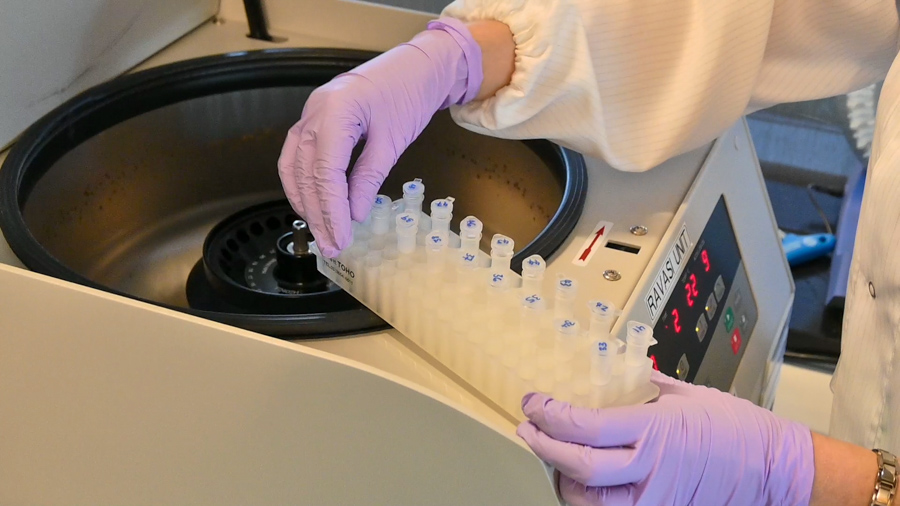
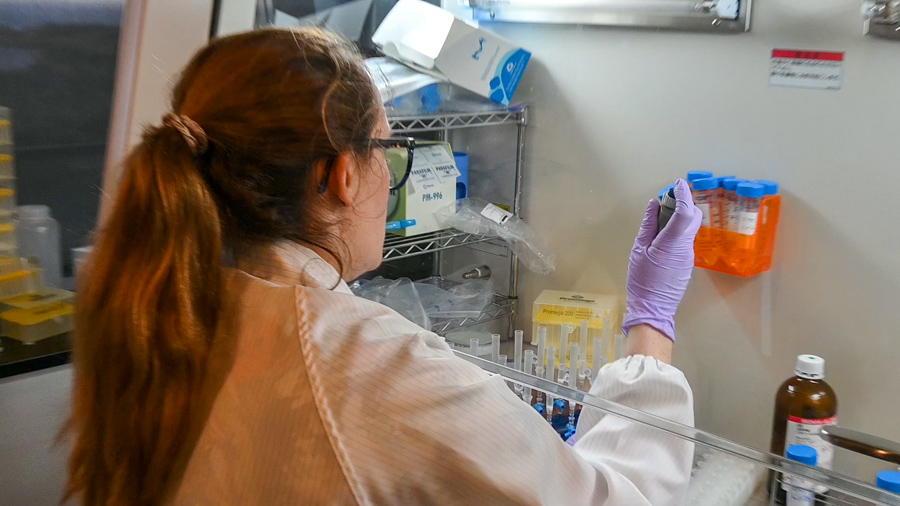
I raise my head and look out the window, as the golden afternoon light sparkles across the incredible architecture and landscaping of OIST. Overlooking the ocean, the Okinawa Institute for Science and Technology has the incredible benefit of looking down upon some of the very fringing reefs where researchers conduct their experiments.
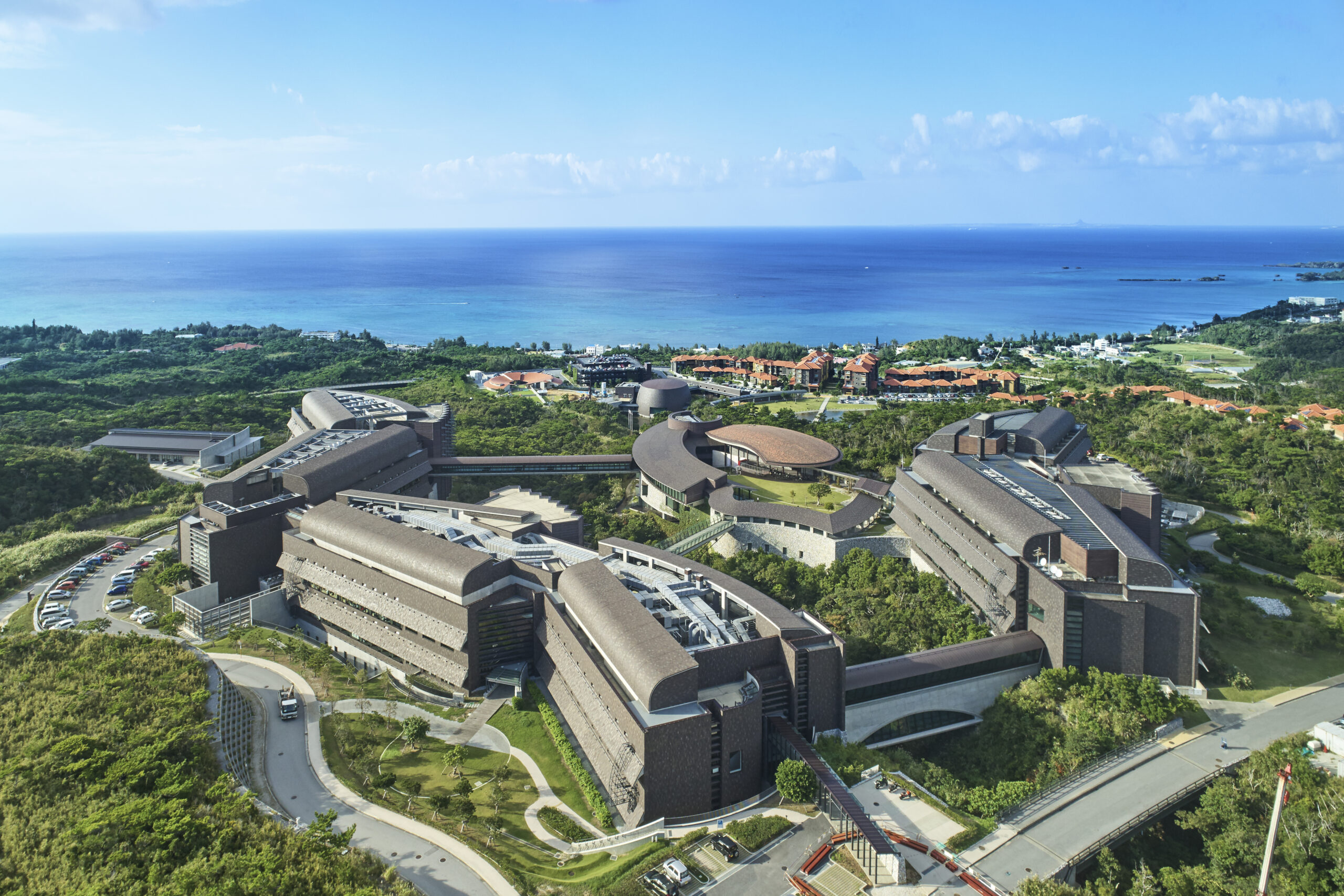
The OIST Campus from above (Image | Supplied via OIST)
Throughout my scholarship year, one of my aims was to explore some of the most cutting edge technologies in marine research. E-DNA, or environmental DNA, is a promising genetic technology that is revolutionising the way we conduct marine biodiversity surveys.
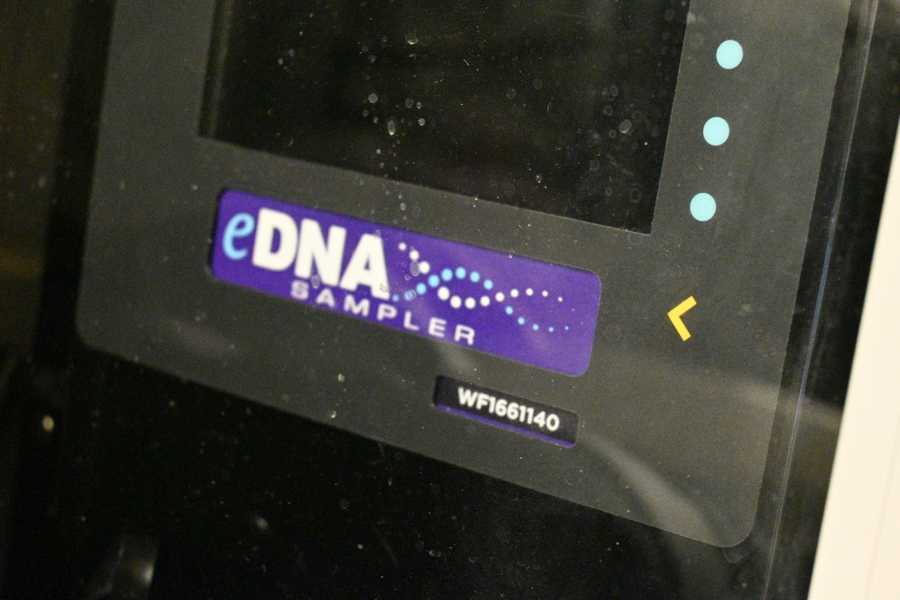
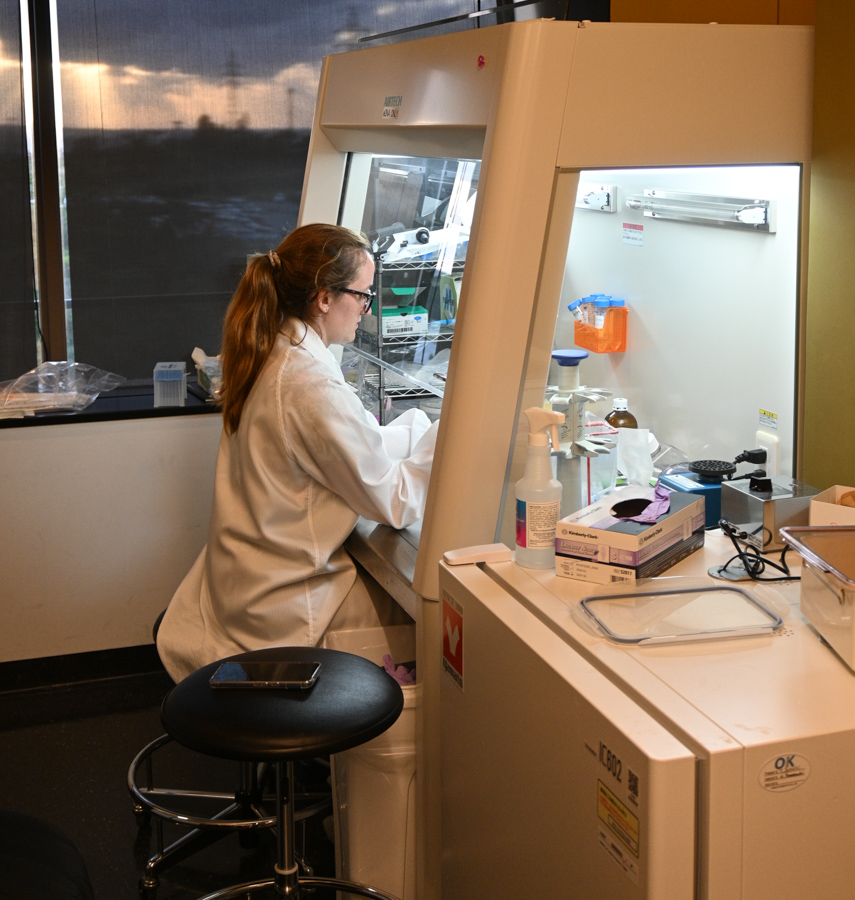
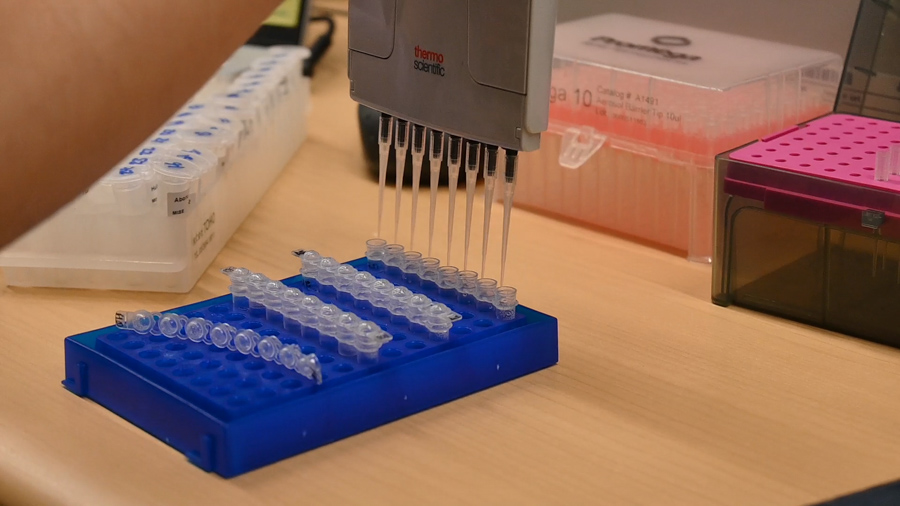
The methodology involves taking a large water sample, which is then concentrated to a small volume. The sample is then filtered to extract any biological material, which then goes through a process of amplification using a variety of primers and buffers. Once processed, the sample can then be sequenced. The end result…? Being able to identify the marine species and biodiversity present in an area using just a water sample.
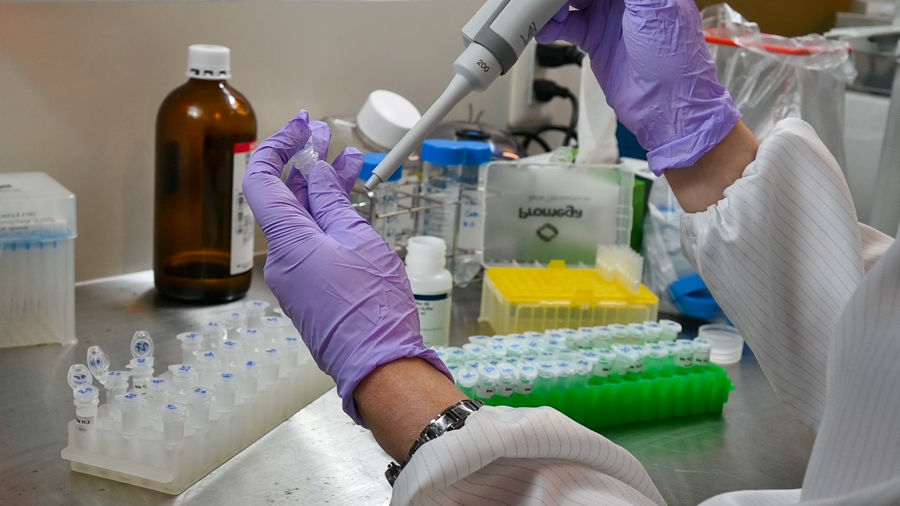
This has huge implications for cutting the costs of surveying, allowing for upscaling across a larger area, or maintaining a greater regularity of surveying.
It even has applications in pest management, for instance in identifying outbreaks of Crown of Thorns Starfish on the Great Barrier Reef. I’m excited to see where this technology takes us in the future, and its myriad of potential applications within marine science.
The Marine Climate Change Unit
I was lucky enough to be hosted at the Okinawa Institute of Science and Technology, by the Marine Climate Change Unit. Run by Professor Timothy Ravasi, their lab group specialises in how species adapt to changes in the environment, especially those linked to climate driven stressors. OIST has a world class reputation for its genetic research, and the lab group was no exception, using a variety of molecular and large-scale genomic approaches in their research.
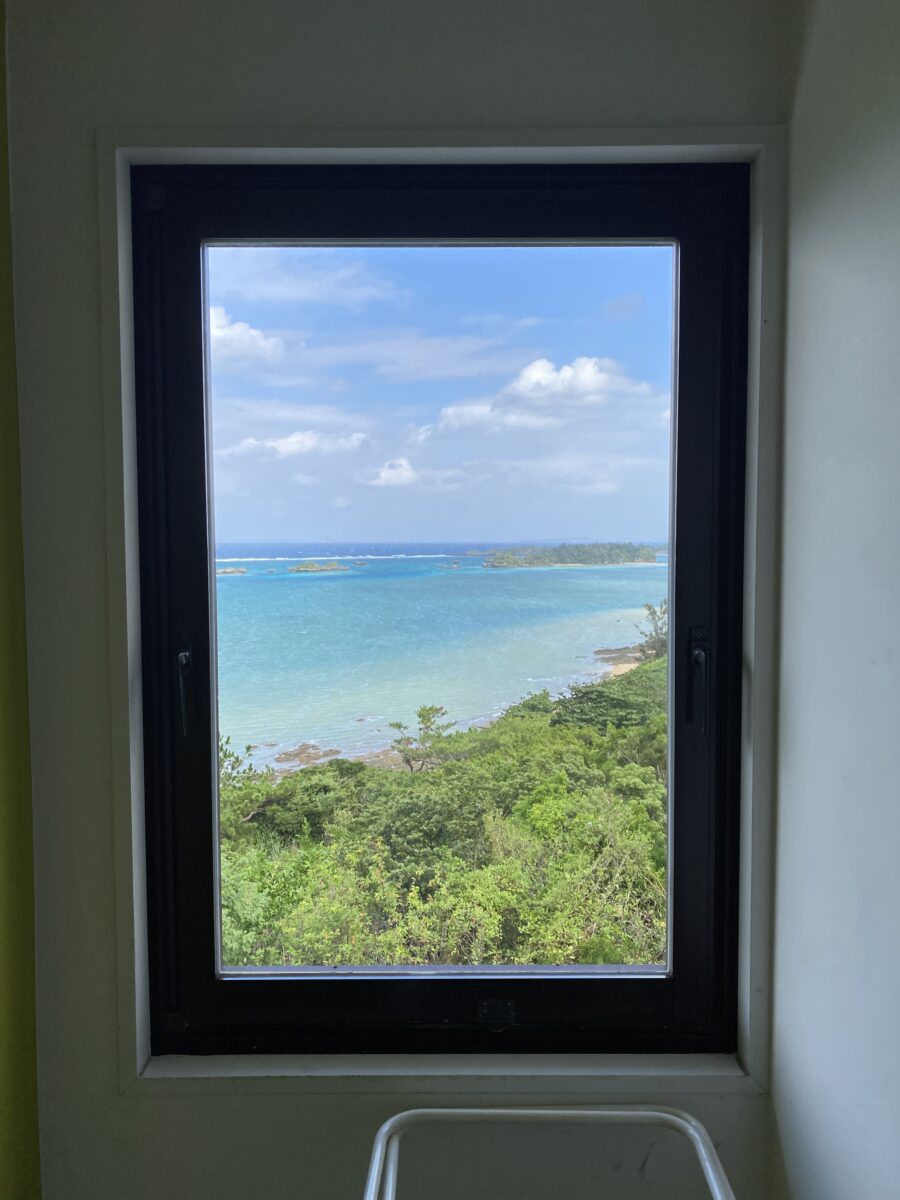
The view from my window… pretty hard to beat!
Generously, the lab provided accommodation for me in the OIST Seaside house, which looks out across the waterfront onto the beautiful reef system below.
Founded in 2011, OIST is a contemporary, post graduate only university. It has an unusual, progressive structure in which there are no “faculties”, for instance, like the science or arts faculty. Rather, the structure is based around the lab groups and research areas, which allows for much greater cross disciplinary research.
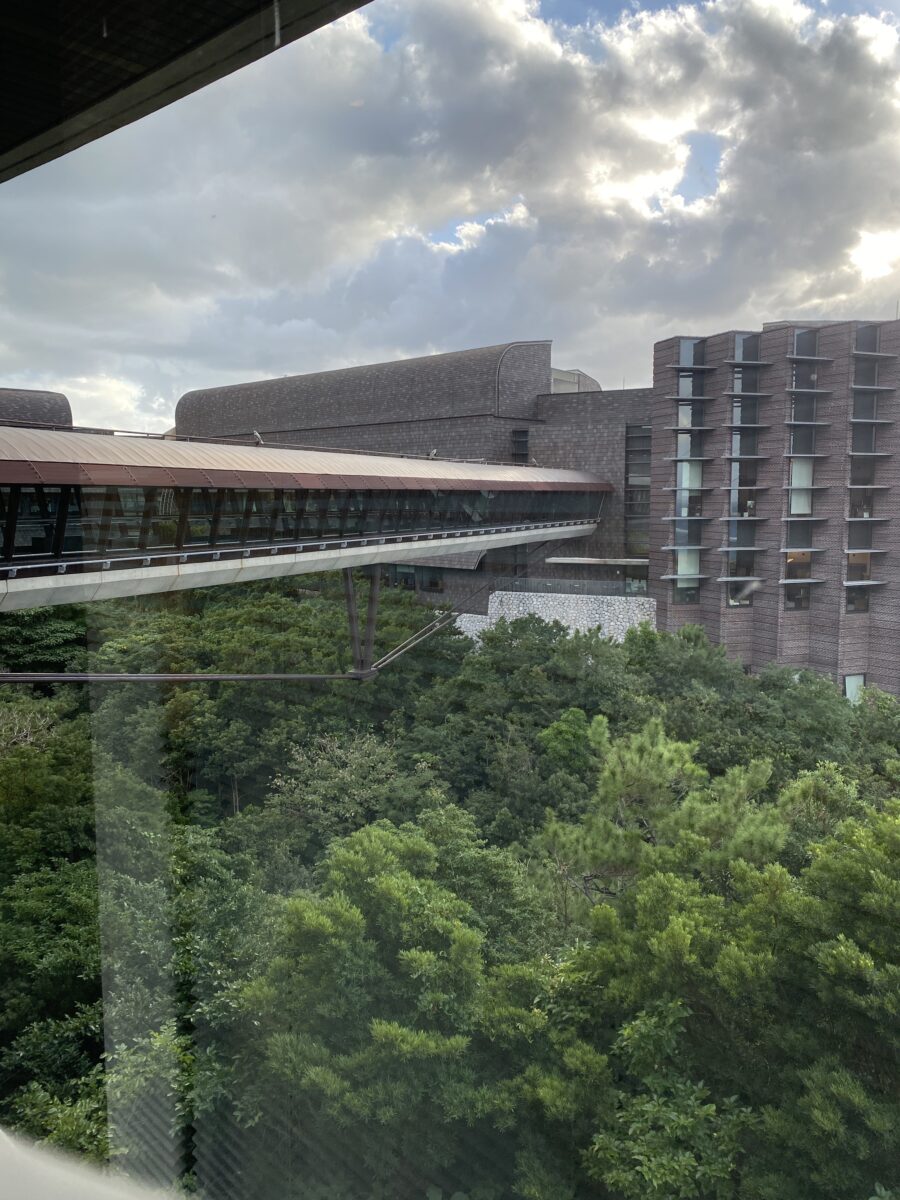
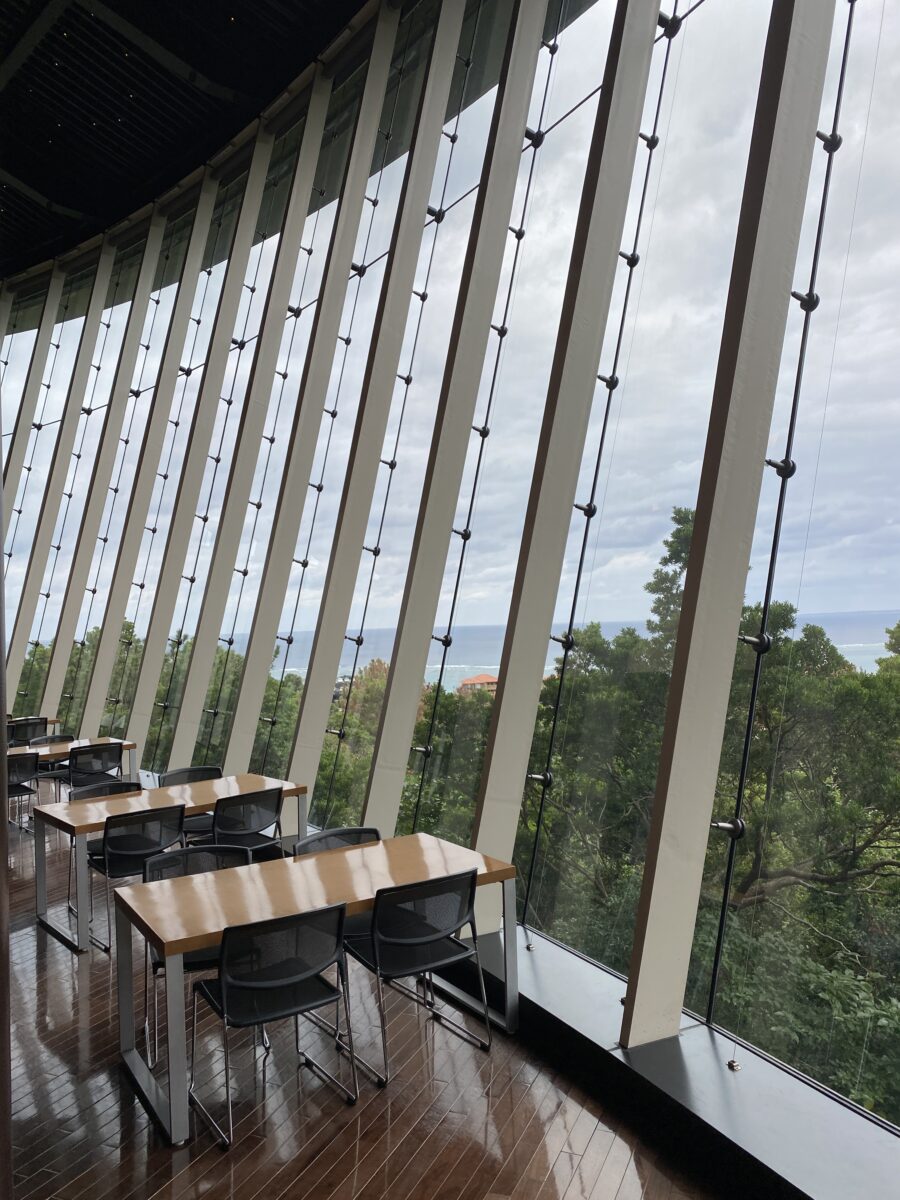
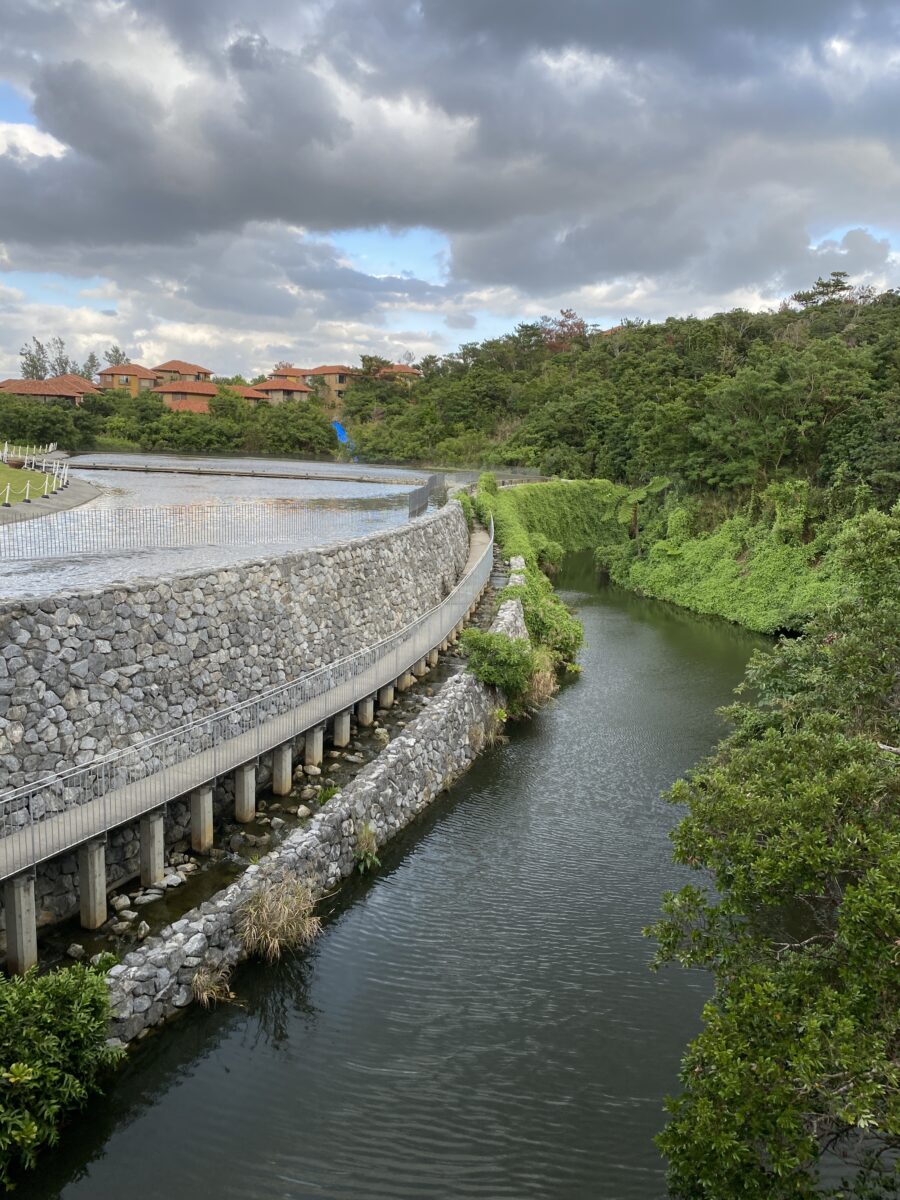
Some of the beautiful landscaping around the OIST Campus
During my week here with the Marine Climate Change Unit, I shadowed Ciara as she prepared e-DNA samples, for a long term study on tropicalisation in Japan.
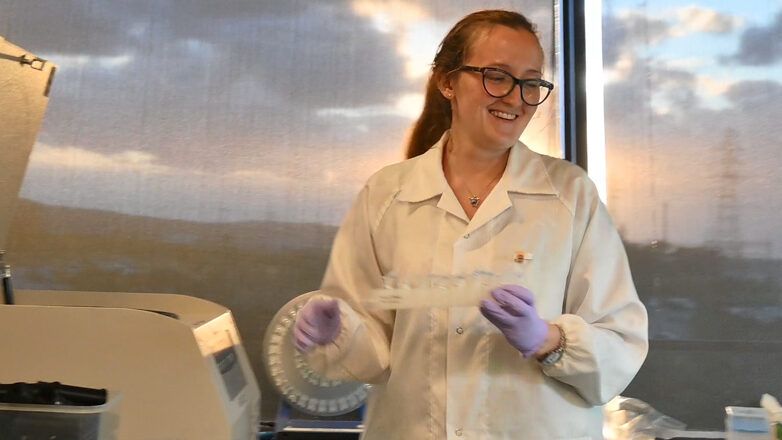
The study utilises both visual surveys of the species in an area, in combination with e-DNA samples from the site. The e-DNA processing allows the researchers to get a more comprehensive understanding of the species present in a particular region, especially for cryptic species which can be difficult to spot! The dataset spans sites across the length of Japan from tropical regions, sub tropics and temperate environments over a period of 8 years. Ultimately, the goal is to track changes in the composition of the species to see if warming oceans are effecting the type of species present in an area.



Some of the biodiversity around Okinawa
I also took part in the weekly lab meeting, and heard all about the research happening in the lab as many students were preparing for the Indo-Pacific Fish Conference 2023. This was actually a great way to get a feel for the type of research occurring in the lab, which is focused on the adaptation of species to environmental changes brought by climate change.
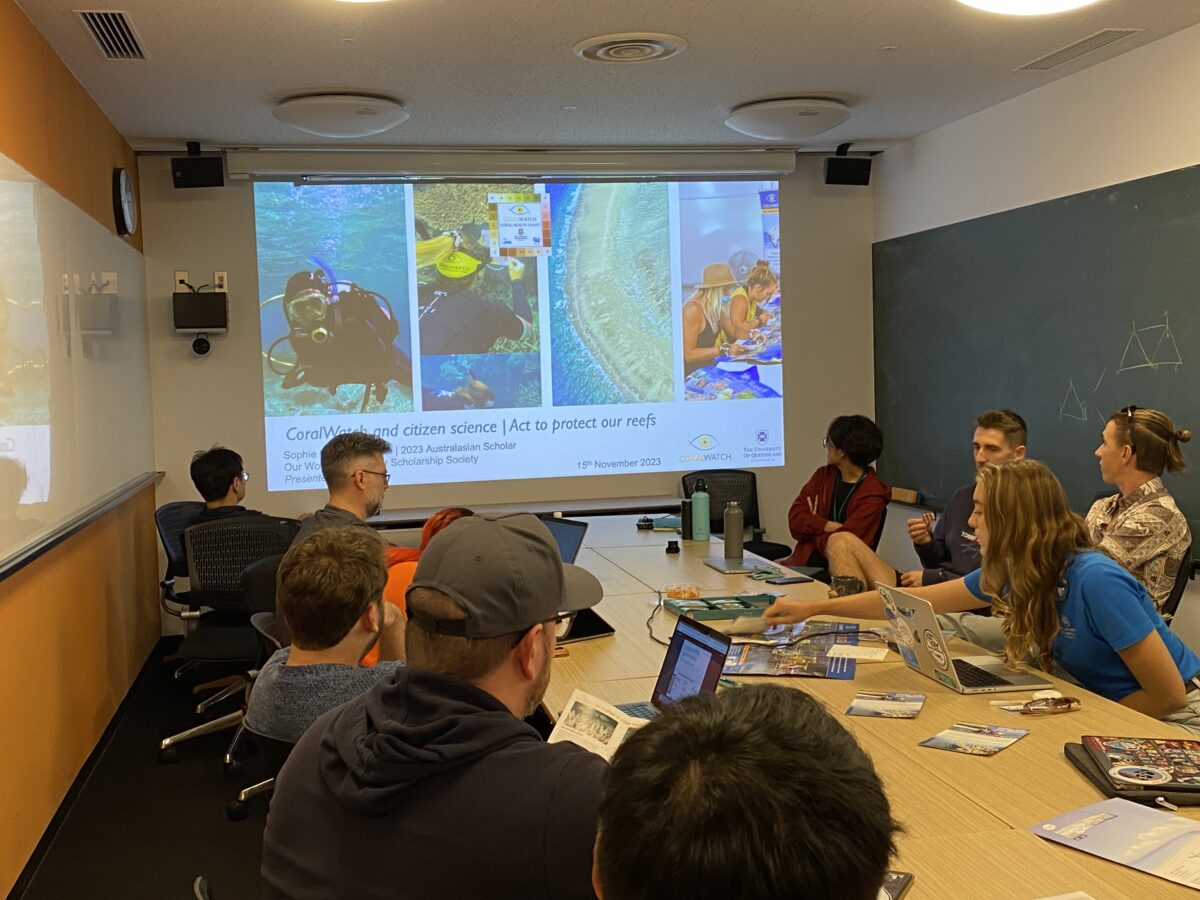
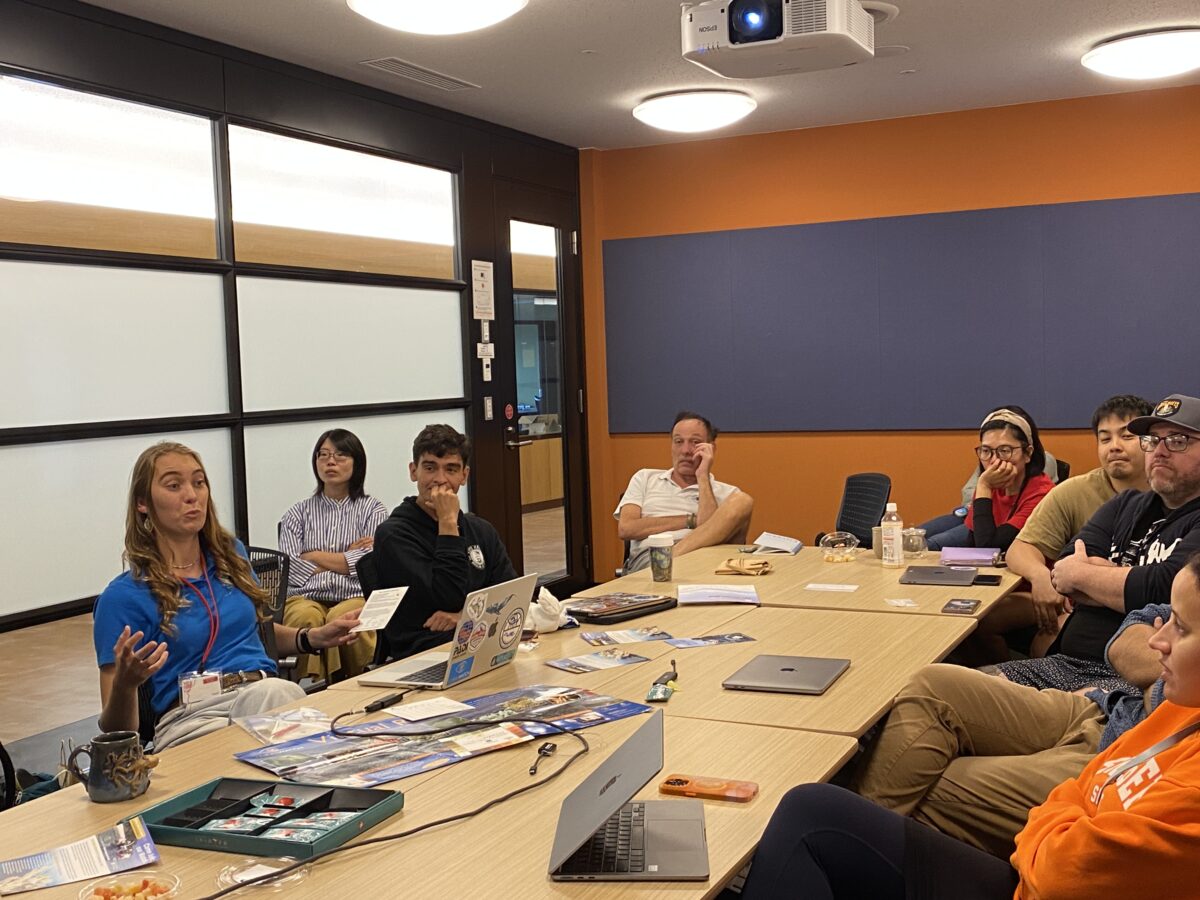
While I was here, I also gave a quick presentation on the OWUSS Scholarship and an overview of the CoralWatch Coral Health Chart.
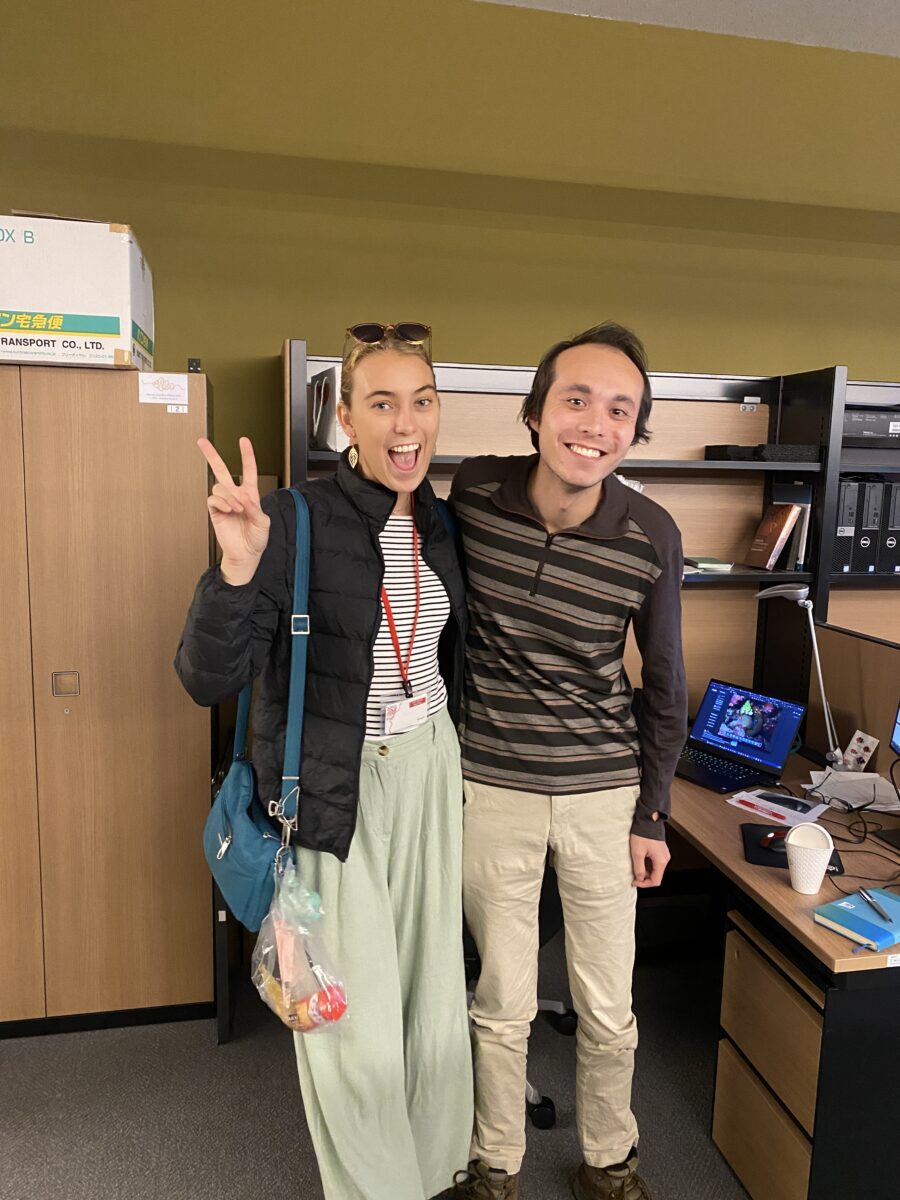
Bumping into an old friend from one of my labs back home in Australia!
The University of the Ryukyus | MISE
While in Okinawa, I also had the opportunity to get a taste of a different university setting, at the University of Ryukyus! I was invited to join James Remiers lab, the MISE: Molecular Invertebrate Systematics and Ecology Laboratory. I met the team at a lab meeting one evening, giving a CoralWatch presentation, and later in the week had the opportunity to join the team for some field work! The inclusive friendly vibe, and family nature of the lab was immediately obvious. Arigatou Sensei!
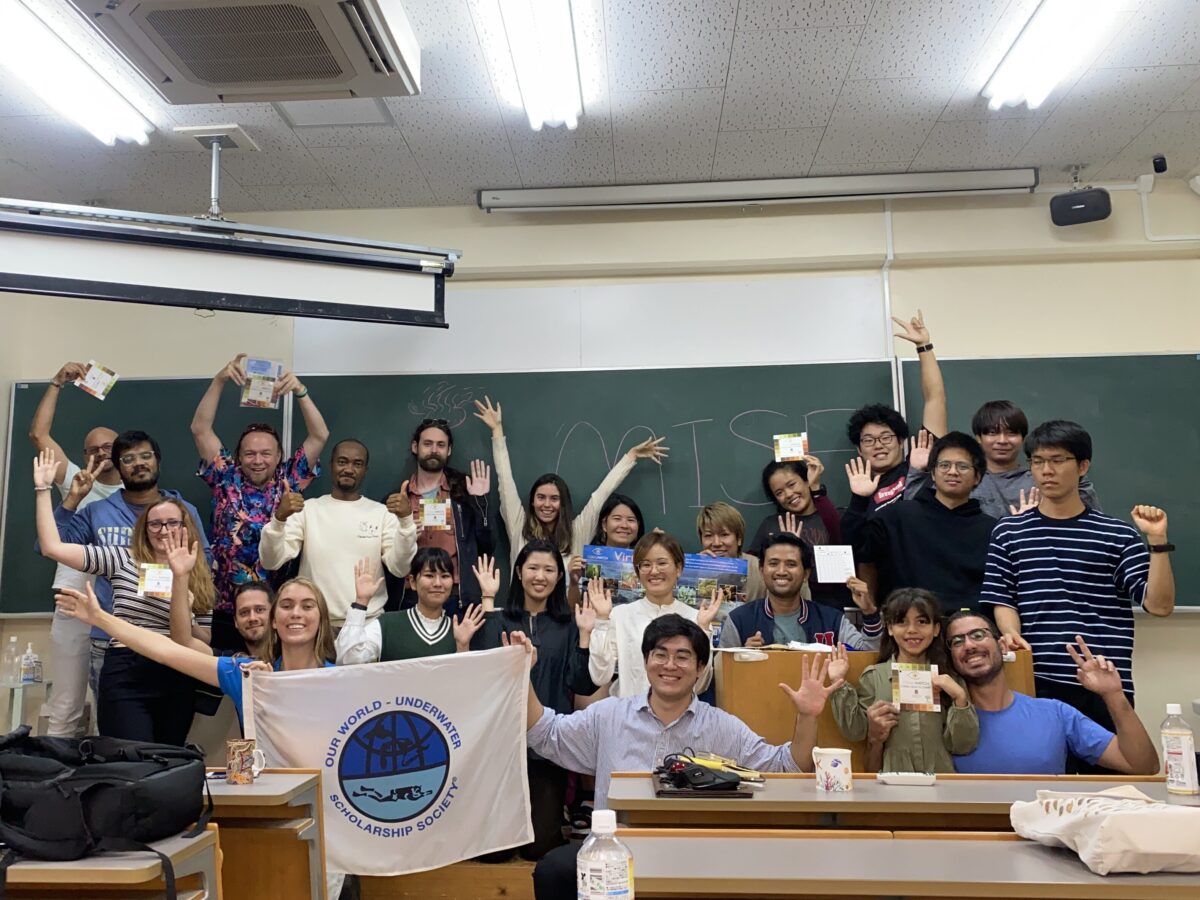
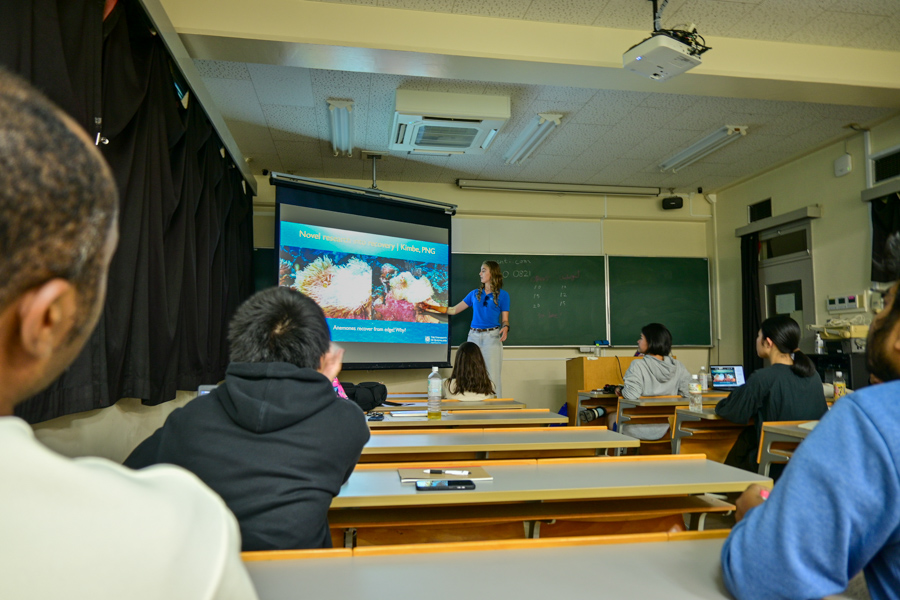
Here I did my first and only diving in Japan, and I have to say, I am hooked!
Despite an urban jungle of apartments and concrete steps plunging straight into the ocean, swim 15m off shore and you are already onto a vibrant reef flat, biodiverse with corals.


Swim another 10m, and you encounter the first of many underwater limestone caves. Filled with schools of gleaming fish, delicate lace corals and dappled sunlight, these cavern systems were stunning to explore.
For our field work here, the team was trying to quantify the environmental condition of a new species of coral identified here in Japan, specifically Palythoa mizigama (a cave dwelling species) and Palythoa heliodiscus (a solo dwelling reef species).

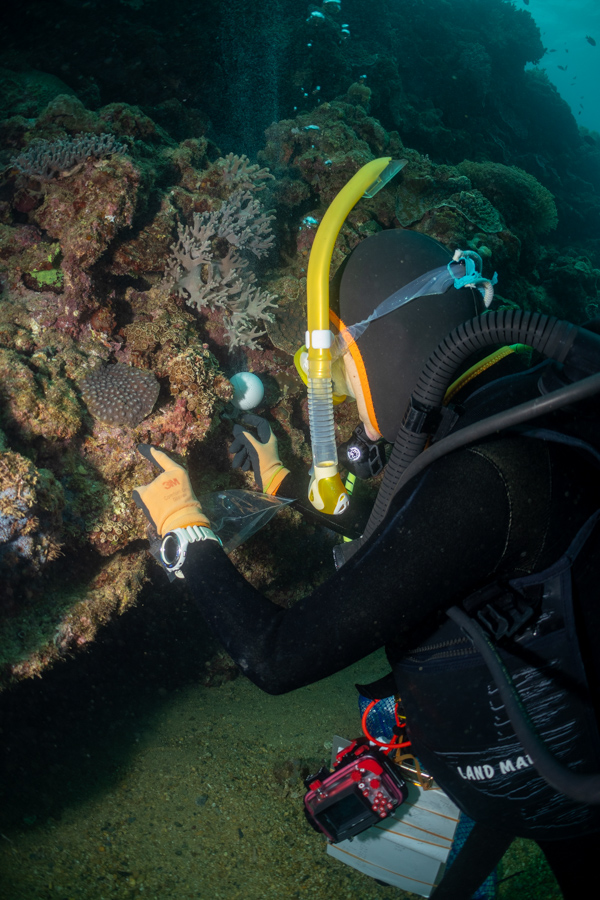


To do this, they were installing plaster balls to measure the degree of current and water movement. The ball is weighted, installed and eroded by the action of the water, then dried, and weighed again. The different acts as a measure of how much water movement is present in the area!


A massive thank you to Kairi, Timo, and the rest of the team for taking me on my first diving experience in Japan and showing me the ropes!


This certainly won’t be my last time diving in Japan… and I could imagine myself studying here in future!




Of course, our scholarship experiences are not solely limited to our academic pursuits, and I was lucky enough to make some great friends in Okinawa. I found myself stranded late at night after grocery shopping, after the ubers has stopped running. My phone wouldn’t connect to the Taxi company. Desperate, I tentatively approached a friendly looking group of young people. Eager to help, they took me to the free phone indoors and assisted me to call a local taxi company. No luck. They tried another on their mobile phone, no joy. After a hushed conversation in Japanese, the google translate app was pulled out, and I was tentatively handed a phone with the translation “We can take you home if you like?”. Relieved and grateful, only in Japan would I feel comfortable to take a life home with a group of strangers. Listening to Japanese music, with an assortment of soft toys across the dash, they safety dropped me home and insisted on giving me some tea!
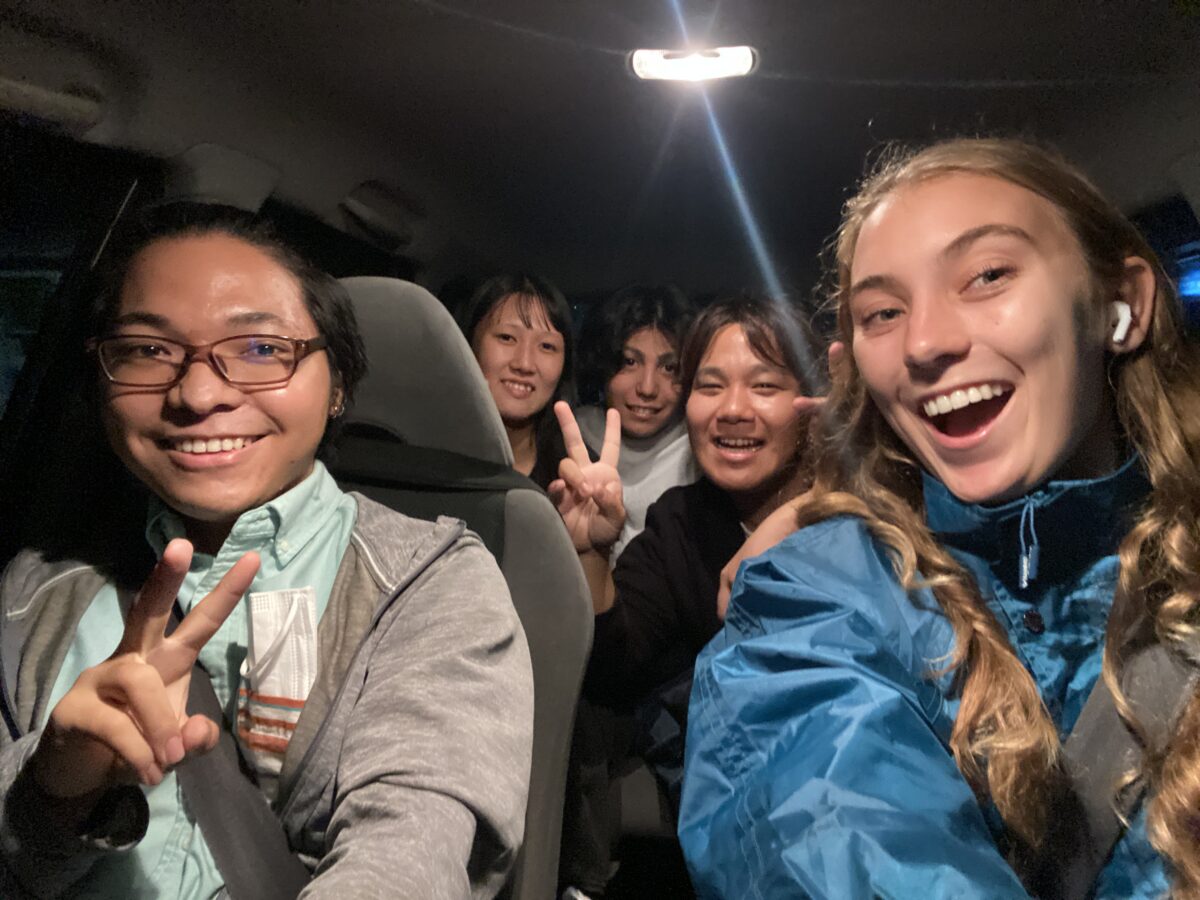
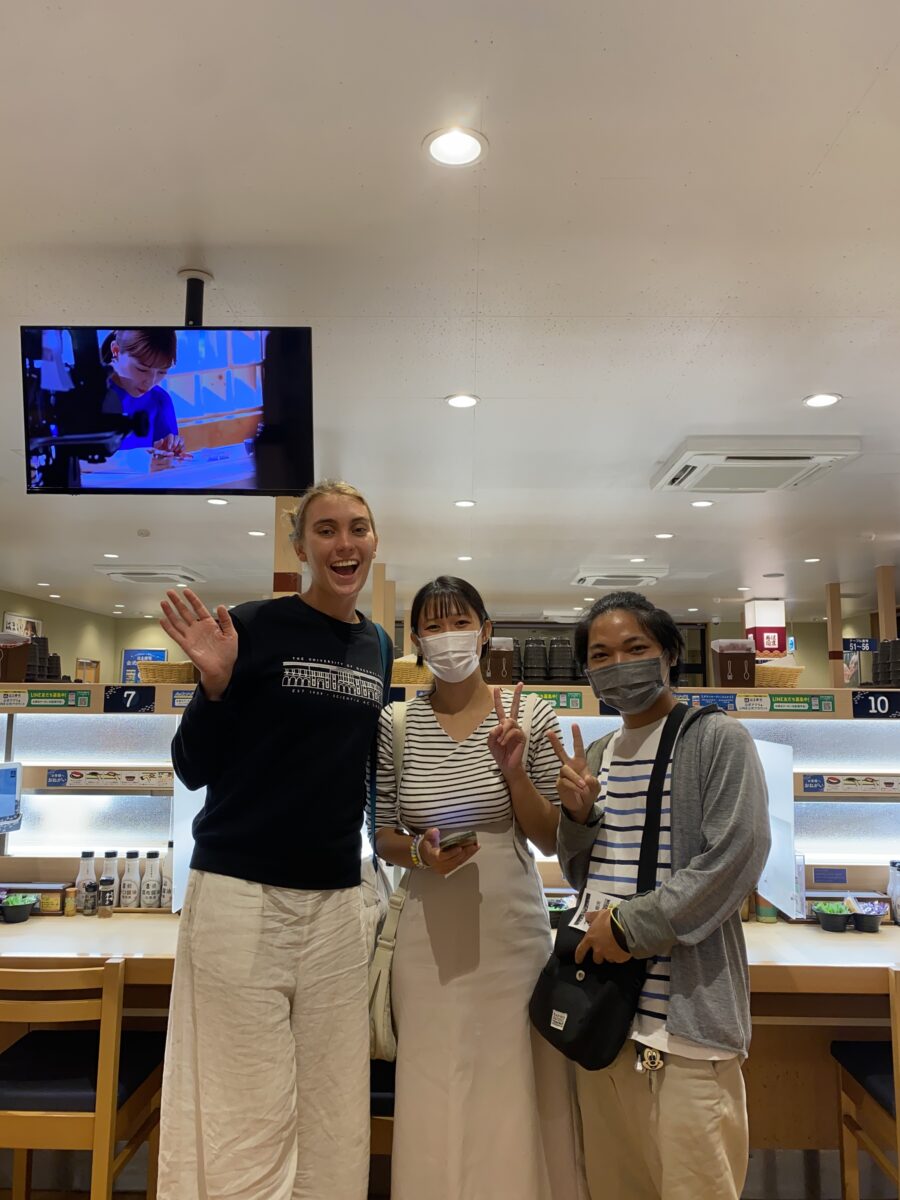
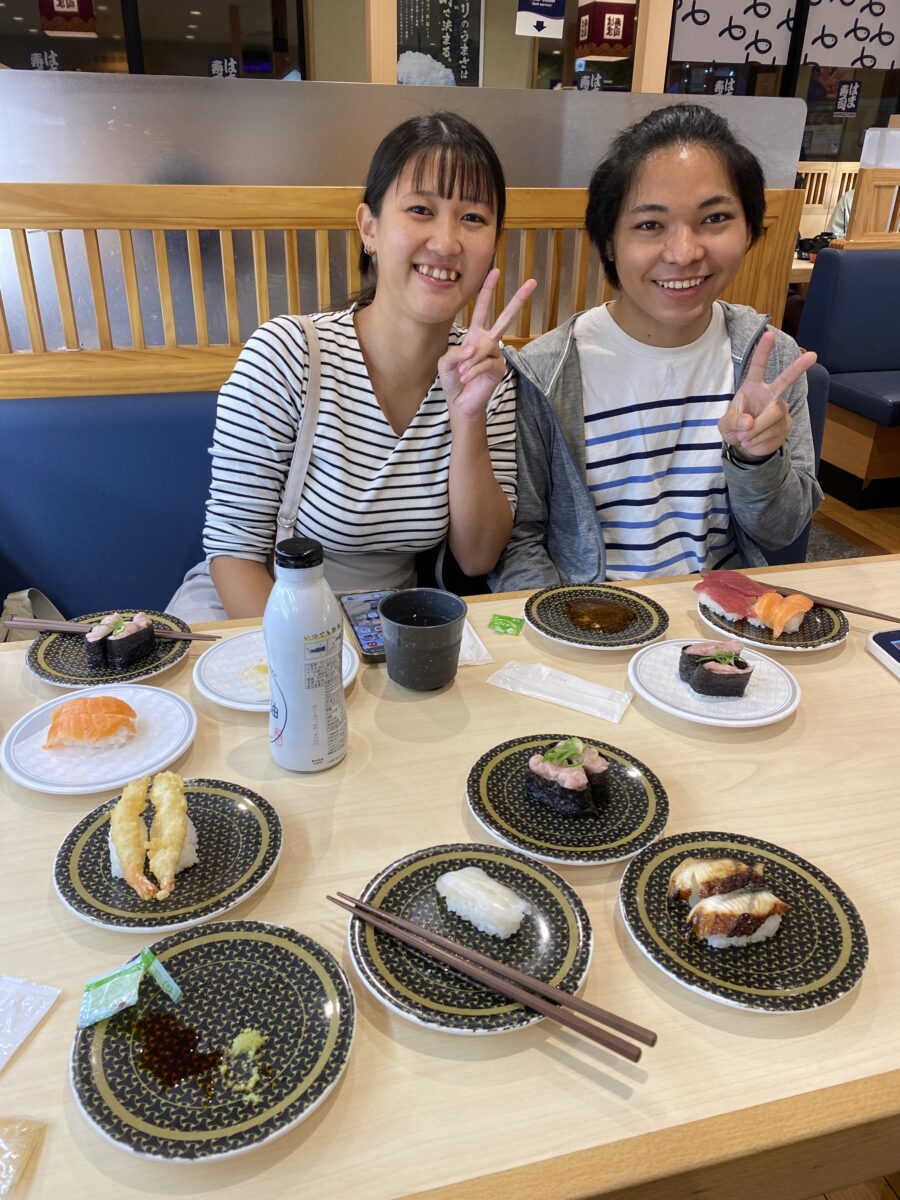
This same couple ended up inviting me out to dinner on my last night, where we had delicious Sushi and Soba noodles. Despite my very basic Japanese, we had a beautiful evening together with lots of laughter and joy. Afterwards, they look me to the shops and insisted on buying me some Japanese snacks for my journey. I have always loved the Japanese culture, and their warmth and hospitality never fails to amaze me. Thank you Mira and Shogo and her partner for making my stay in Okinawa that much more special.
Reflections
My time in Japan, though short, was truly special. I reconnected with a country I have come to love over the course of my life, and rediscovered it in a new light through my first time diving in its waters. I can’t wait to come back to Japan and explore diving around its coastlines. I engaged with two new institutions, and after discovering the internship program run through OIST, I’m eager to explore options to come back and study here in future. Thank you to all involved in my time in Japan. A special thank you to Timothy Ravasi and the lab for hosting me in beautiful Okinawa, Sensei Yoko for organising many logistics and Ciara for taking the time to teach me about e-DNA! I will be back!

I am so grateful to OWUSS for making opportunities I would not have dreamed of before and broadening my horizons to a global scale. A special thank you to the countless volunteers behind OWUSS, and the sponsors that make this scholarship possible at ROLEX. I would also like to thank my equipment sponsors at TUSA, Waterproof International, Reef Photo & Video, Mako Eyewear, Penetrator Fins, my camera gear sponsors at Reef Photo & Video, Nauticam, and long time scholarship supporters DAN, and PADI.
To follow along on my adventures, I highly recommend you follow me on social media!
My Instagram @sophie_dives is where I post most regularly.
You can also contact me on LinkedIn, Twitter, Tiktok, and the Australasian Scholar Facebook Page.
You can also subscribe to this blog here!